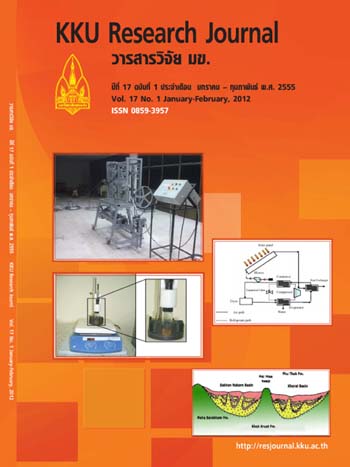A cane cutter allocation correspond planned sugar cane harvest scheduling to maximize total sugar yield
Main Article Content
Abstract
A sugar industry’s inbound logistics is continuously processing from planning sugar cane cultivation, harvesting, and transportation to the mill and to management of mill front yard. The sugar cane which transported to the mill must be continuously supplied to sugar production process at its fullest capacity and obtain high qualities that have the maximum value of total sugar yield. Therefore, this research was conducted to allocate the sugar cane cutter according to planned harvest scheduling in which the objective was to minimize sugar cane cutter cost and while preserving the maximum value of total sugar yield in the initial harvested scheduling. There were 3 models of the harvesting; the 1st harvest cutting model: labor could not split from their group, the 2nd harvest cutting model: labor could split from their group and the 3rdmodel considering the 1stmodel and the 2ndmodel together. The heuristic algorithms in 3 models and searching method by a meta-heuristic called Simulated Annealing (SA) were developed for solving problems.
Article Details
How to Cite
Sethanan, K., & Neungmatcha, W. (2017). A cane cutter allocation correspond planned sugar cane harvest scheduling to maximize total sugar yield. Asia-Pacific Journal of Science and Technology, 17(1), 45–57. retrieved from https://so01.tci-thaijo.org/index.php/APST/article/view/82816
Section
Research Articles


